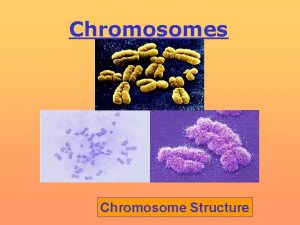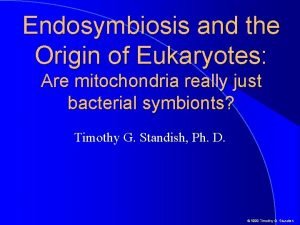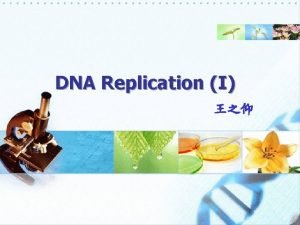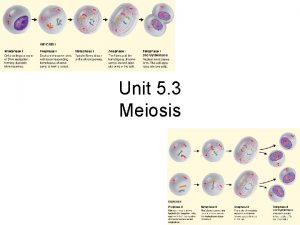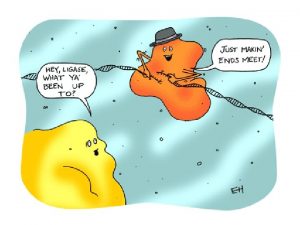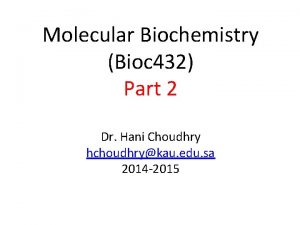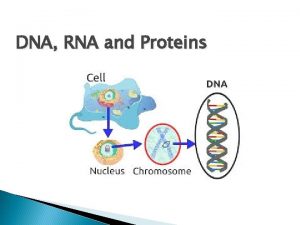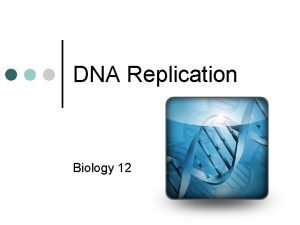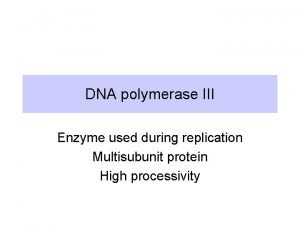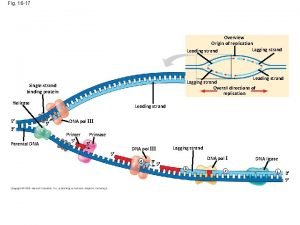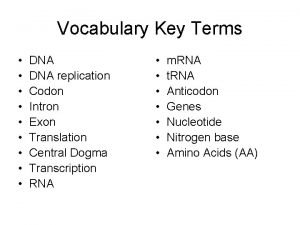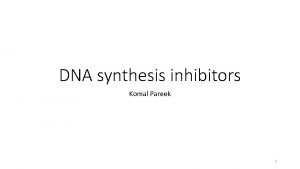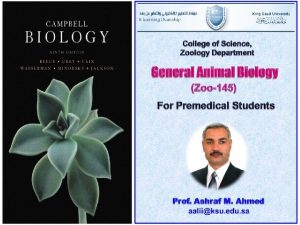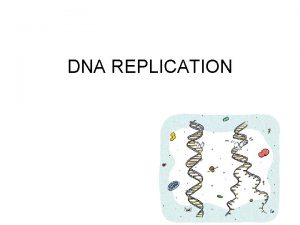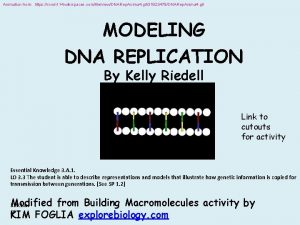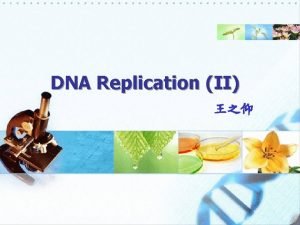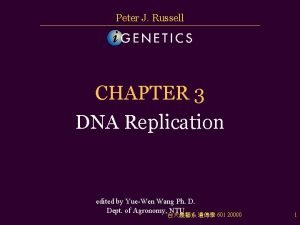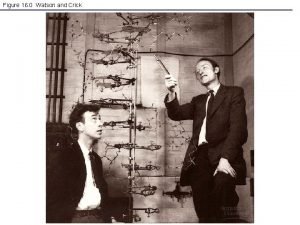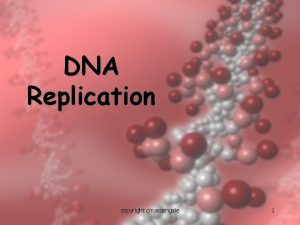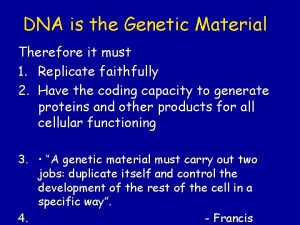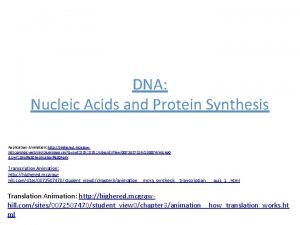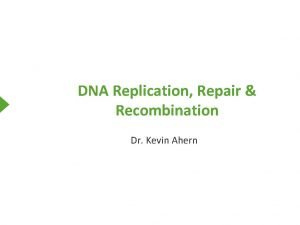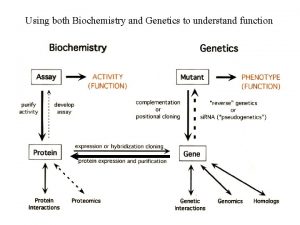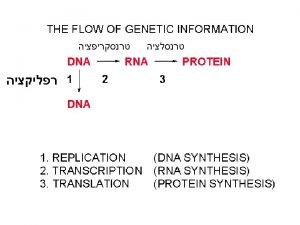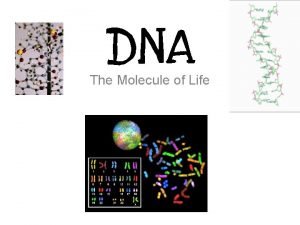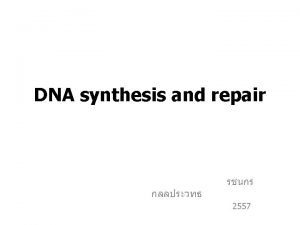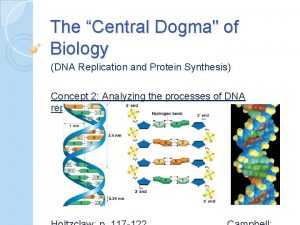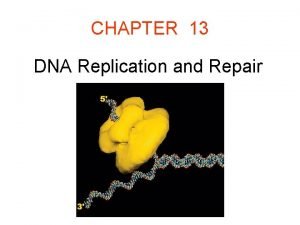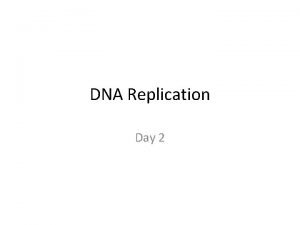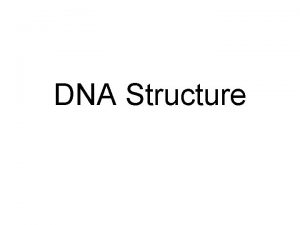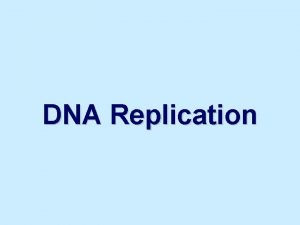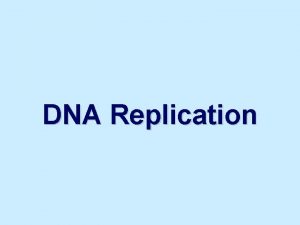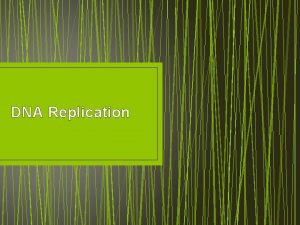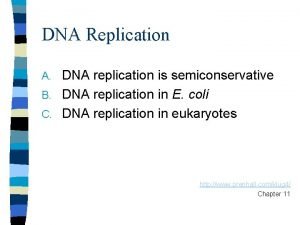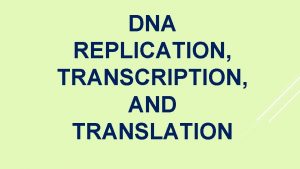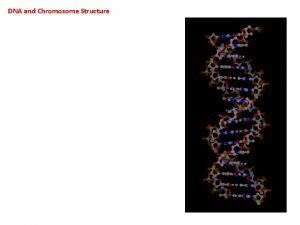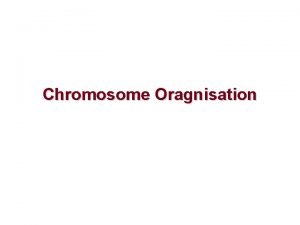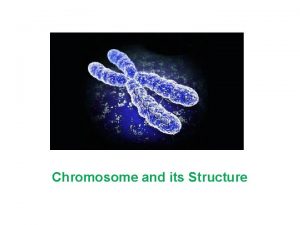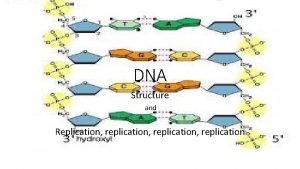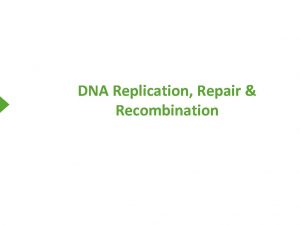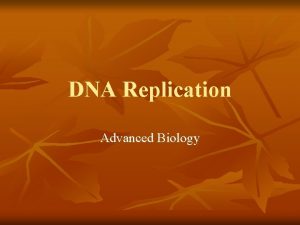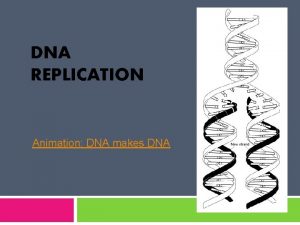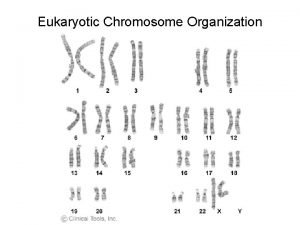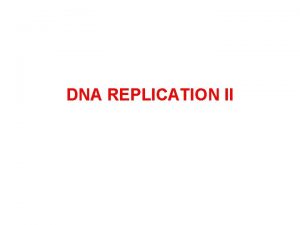DNA Replication I u Any eukaryotic chromosome contain






































- Slides: 38

DNA Replication (I) 王之仰

u Any eukaryotic chromosome contain three functional elements to replicate and segregate correctly: (1) replication origins at which DNA polymerases and other proteins initiate synthesis of DNA; (2) the centromere, the constricted



region required for proper segregation of daughter chromosomes; and (3) the two ends, or telomerases. u Replication of DNA begins from sites that are scattered throughout enkaryotic chromosomes.

u The yeast genome contains many ~100 bp sequences, called autonomously replicating sequences (ARSs), that act as replication origins. u Up to 20% of progeny cells are faulty on the mitotic segregation.




u A CEN sequence (yeast centromere sequence) leads to a equal or nearly equal segregation of yeasts during mitosis. u If circular plasmids containing an ARS and CEN sequence are cut, the resulting linear plasmids do not replicate unless they contain

special telomeric (TEL) sequences ligated to their ends. u Three regions (I, II, and III) of the centromere are conserved among different chromosomes. u Conserved sequences are present in the region I and III.

; the region II has a fairly constant length (rich in A and T residues) and it contains no definite consensus sequences. u Regions I and III are bound by proteins that interact with more than 30 proteins.


which in turn bind to microtubules. u Region II is bound to a nucleosome that has a variant form of histone H 3 replacing the usual H 3. u Centromeres from all eukaryotes similarly are bound by nucleosomes

with this specialized, centromerespecific form of histone H 3, called CENP-A. u In human, centromeres contain 2 to 4 -megabase arrays of a 171 -bp simple-sequence DNA called alphoid DNA.


u The telomere repeat sequence in vertebrates is TTAGGG; these simple sequences are repeated at the very termini of chromosomes. u The 3’end of the G-rich strand extends 12 -16 nucleotides beyond the 5’-end of the complementary Crich strand; The region is bound

by specific proteins that protect the ends of linear chromosomes from attacked by exonucleases. u The need for a specialized region at the ends of eukaryotic chromosome is apparent when we consider all DNA polymerases elongate DNA chain at the 3’-end, all require an

RNA or DNA primer. u Unlike the leading strand, the lagging-strand template is copied in a discontinuous fashion, it cannot be replicated in its entirety. u The telomere shortening is solved by an enzyme that adds telomeric (TEL) sequences to the ends of each

chromosome. u Because the sequence of the telomerase-associated RNA serves as the template for addition of d. NTPs to the ends of telomeres-the

source of the enzyme and not the source of the telomeric DNA primer determines the sequence added. u Telomerase is a specialized form of a reverse transcriptase that carries its own internal RNA template to direct DNA synthesis.




u The human genes expressing the telomerase protein and the telomerase-associated RNA are active in germ and stem cells, but are nearly turned off in most cells of adult cells. u These genes are activated in most cancer cells, where telomerase is

required for the multiple cell divisions necessary to form a tumor. u Telomerase prevents telomere shortening in most eukaryotes, some organisms use alternative strategies; Drosophila species maintain telomere lengths by the regulation insertion of non-LTR

retrotransposons into telomeres. u Telomeres: the physical ends of linear chromosomes, consist of tandem arrays of a short DNA sequence, TTAGGG in vertebrates. Telomeres provide the solution to the end-replication problemthe inability of DNA polymerases to


completely replicate the end of a double-stranded DNA molecule. u Embryonic cells, germ-line cells, and stem cells produce telomerase, but most human somatic cells produce only a low level of telomerase as they enter S phase;

their telomeres shorten with each cell cycle. u Complete loss of telomeres leads to end-to-end chromosome fusions and cell death. u Extensive shortening of telomeres is recognized by the cell as a kind of DNA damage, with consequent

stabilization and activation of p 53 protein, leading to p 53 -triggered apoptosis. u Most tumor cells, despite their rapid proliferation rate, overcome this fate by producing telomerase. u Specific inhibitors of telomerase have been used as a cancer therapeutic


agents. u Introduction of telomeraseproducing transgenes into cultured human cells can extend their lifespan by more than 20 doublings while maintaining telomere length. u Treating human tumor cells with anti-sense RNA against telomerase

caused them to cease growth in about four weeks. u Dominant-negative telomerases, such as those carrying a modified RNA template, can interfere with cancer cell growth-when such a mutant was expressed in prostate or breast cancer cells, the cells became apoptotic.

u Genetic approaches have demonstrated that mice homozygous for a deletion of the RNA subunit of telomerase are viable and fertile was surprising. However, after four to six generations defects began to appear in the telomerase-null mice as their very long telomeres (40 -60

kb) became significantly shorter; the defects included depletion of tissues that require high rates of cell division, like skin and intestine, and infertility. u Skin papilloma induced by a combination of chemical carcinogens occurs 20 times less

frequently in mice lacking a functional telomerase than in normal mice, presumably because p 53 -triggered apoptosis is induced in response to the ever shortening telomeres of cells that have begun to divide. u If both telomerase and p 53 are absent, there is an increased rate of epithelial

tumors such as squamous-cell carcinoma, colon, and breast cancer. u Mice with an APC mutation normally develop colon tumors, and these too are reduced if the mice lack telomerase.
 Bioflix activity dna replication nucleotide pairing
Bioflix activity dna replication nucleotide pairing Prokaryotic chromosome vs eukaryotic chromosome structure
Prokaryotic chromosome vs eukaryotic chromosome structure Function of dna polymerase 3
Function of dna polymerase 3 Chapter 11 dna and genes
Chapter 11 dna and genes Eukaryotic chromosome structure
Eukaryotic chromosome structure Eukaryotic chromosome structure
Eukaryotic chromosome structure Eukaryotic chromosome structure
Eukaryotic chromosome structure Chromosome replication
Chromosome replication Chapter 13 the molecular basis of inheritance
Chapter 13 the molecular basis of inheritance Okazaki fragments
Okazaki fragments Dna replication comic strip
Dna replication comic strip Okazaki
Okazaki Dna replication jeopardy
Dna replication jeopardy Summary of dna replication
Summary of dna replication Dna replication fork
Dna replication fork Dna primase
Dna primase Dna replication
Dna replication Dna structure and replication pogil
Dna structure and replication pogil Dna replication
Dna replication Dna replication pearson
Dna replication pearson Dna replication bubble animation
Dna replication bubble animation Nucleoside triphosphate in dna replication
Nucleoside triphosphate in dna replication Dna replication fork diagram
Dna replication fork diagram Significance of replication
Significance of replication 3 models of dna replication
3 models of dna replication S phase
S phase Dna replication transcription and translation
Dna replication transcription and translation 3 models of dna replication
3 models of dna replication Dna sequence
Dna sequence Replication fork
Replication fork Dna synthesis at replication fork
Dna synthesis at replication fork Direction of helicase
Direction of helicase Dna stand for
Dna stand for Helicaee
Helicaee Bioflix dna replication
Bioflix dna replication Dna replication is considered semiconservative because
Dna replication is considered semiconservative because Dna replication
Dna replication Dna replication
Dna replication The principal enzyme involved in dna replication is
The principal enzyme involved in dna replication is

